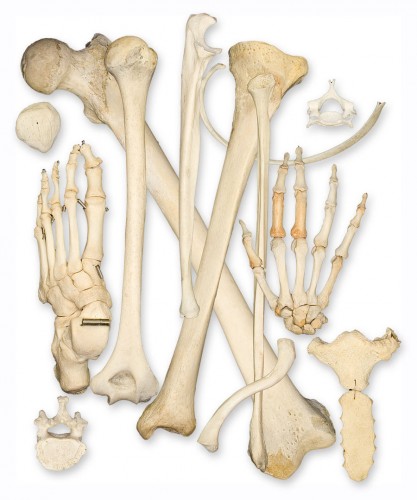Posted by Richard Rawlinson
No. 1: If politicians stopped shirking the critical issue of grave space running out in urban churchyards and cemeteries, and instead hastened legislation to reuse graves after a period of 75 years, they would be hounded out of office by an outraged public, and tabloid headlines such as, ‘Government to dig up Grandma’.
When reuse has been piloted in London, far from a loud outcry, there’s been praise that traditional graveyards are no longer, er, dead space: lovely old headstones are engraved on both sides—recycling at its most creative. By digging deeper, old and new bodies can also cohabit.
The Victorians had no qualms about this. And in Greece today, and some other Orthodox countries, a body is buried only for about six years, at which time the grave is reused. There’s no scandal when, in a religious ceremony, bodily remains are dug up, the bones cleaned and stored elsewhere.
When Cardinal Newman’s grave was opened nearly 120 years after his death nothing of his body or skeleton remained. How many prime sites are, in fact, vacant?



One of the biggest reasons that there is no outcry in Greece is the established practice of secondary burial in ossuaries. Britain has no such tradition so how would we rehouse the bones.
An interesting debate to be had there, I think!
Quite so, Jenny. We have no tradition of the rite of second treatment – we lost it.
Or did we? When a grave is dug in a parish churchyard old bones are thrown up and reburied. I’d have thought the current lift-and-deepen procedure a workable one. Dig up the bones and reinter them below the subsequent burial. What do you think of that?
I for one would love to see some ritualistic use of bones in future funeral practices.
Thomas Lynch tells us that the dead don’t care; is it sentimentality that makes the living care too much? They wouldn’t, of course, be digging up Grandma, just the bones that were once part of her, and it would, after 75 years, more likely be great-grandma, wouldn’t it? And how many people actually visit their great-grandma’s graves? Would a way ahead be to carry out such re-burials in cases where permission had been requested from nearest living relative, if traceable, and if not – the question is answered? We need to do something, or the choice may soon not be… Read more »
Graves are visited for an average of 15 years. The exceptions are the graves of children. The problem with conventional burial is that graves are not charged for at their real cost. If a burial ground must be maintained for ever, the real cost is enormous bordering on incalculable. I think it’s disappointing that the natural burialists, in particular, have not engaged with this. If a burial ground is to be a living memorial to its dead and serve a continuing social purpose it must be active. If it is active, it becomes financially sustainable. A 75-year turnaround would enable… Read more »
More of the 70% who choose cremation would perhaps go for burial if there was more reuse of churchyards and cemeteries as well as the woodland site option.
Are there sympathetic MPs or credible lobby groups promoting the need for legislation about reuse? I doubt it would exactly capture a great deal of public interest but I also doubt it would cause much outcry.
On its side reuse has consumer choice, common sense and eco-credentials. It also liberates those who choose cremation by default not just from cremation itself but from dull services which could be made better elsewhere.
Where re-use has been permitted by law there has been virtually no uptake:
http://www.london.gov.uk/sites/default/files/Audit%20of%20London%20Burial%20Provision.pdf
Interesting, Charles. Aside from the majority preference for cremations, could the lack of uptake for reused graves be because we haven’t quite yet ran out of graveyard space? But when we do the call may grow?
Yes, I guess they’ll hit the buffers and start digging. The legislative process has been pussyfooting and apprehensive when a radical approach is needed. Most Brits are pragmatic enough to take this sort of thing in their stride. Send for Mr Gove!
London’s Muslims are going to find grave space very hard to find, so many of them are there.
PS This is myth blog no.2, not no.1, which was posted a few days before.
https://www.goodfuneralguide.co.uk/2013/02/great-myths-of-funeralworld/
Sorry, Richard, numeracy never a strong point. We’ve still got one to go I’ll think of a number..
😉
Charles, at work I have the safety net of a sub editor proofing grammar and checking facts. You certainly don’t have time for that task!
“More of the 70% who choose cremation would perhaps go for burial if there was more reuse of churchyards and cemeteries as well as the woodland site option.” Do you think so? That’s assuming they choose cremation for its ‘take up less space ‘ ethic – I’m not sure they do – I think it’s perhaps more the sanitised, neat, speedy, (very speedy) hands off the body/coffin ethic…. The Greeks often ‘bury’ in above ground tombs to speed up the drying out process, and the womenfolk go and check periodically to see how the bones are coming along – I… Read more »
Interesting debate – unfortunately we have concentrated on what goes on above ground at the expense of what goes on below for far too long. Out of sight etc. New cemeteries have to satisfy all sorts of criteria with regard to drainage but the ability of a soil to allow natural aerobic decomposition is ignored (at least in the UK). The result is that many bodies are sealed in deep clay subsoil where they will rot slowly. The Natural Burial movement is generally just as guilty in this regard despite common regulation about what is buried along with the body.… Read more »